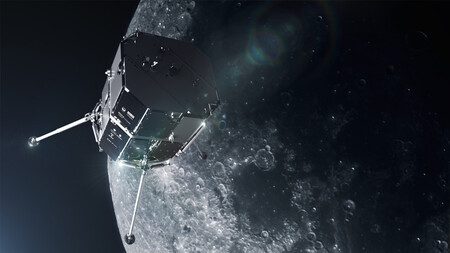We are witnessing a strong resurgence of interest in the Moon. After the relative calm that emerged after the end of the space race, more than a dozen countries have launched initiatives whose main objective is reach the lunar surface. In these times, unlike what happened decades ago, the presence of private actors is more present than ever.
Many companies are no longer content to be mere contractors for government space agencies. On the contrary, they want to play a leading role in this new era of space exploration. One of them is ispace, a Japanese company that aims to become a cornerstone of the “lunar economy.” How do you intend to do it? Developing space infrastructure.
The first private moon landing
Privately sourced ambitions over our rocky neighbor are in no shortage. There are those who have thought of putting data centers on the Moon or even those who speak of build cities on it. The truth is that many of these ideas, although they have certain possibilities to come true, they are very well developed on paper, but they have not yet begun to materialize.
ispace aims to become the world’s first private company to land on the moon. And this is not a goal to be taken lightly. Let’s remember that only the United States, Russia and China have been able to put robotic probes on the lunar surface. Beyond the historical achievement that this may mean, it is the first tangible step of the private company to achieve its biggest plans.
To achieve this, precisely, on December 11, 2022, the Hakuto-R probe was launched from Cape Canaveral, Florida, aboard a rocket SpaceX Falcon 9. The destination of this private ship, which carried two rovers inside (one from the United Arab Emirates and the other from the Japanese Aerospace Exploration Agency) was the Atlas crater, located on the outer edge of the Moon’s Mare Frigoris.
After months of waiting, this Tuesday at 6:40 p.m. (Spanish peninsular time) the long-awaited private moon landing should have taken place. And we say should because the mission has not been without its problems. The mission control center has lost contact with Hakuto-R in the final leg of the descent maneuver, a scenario that was not contemplated within the normal schedule of events.

Takeshi Hakamada, CEO of iSpace
However, ispace founder and CEO Takeshi Hakamada made an bleak statement at a press conference tonight: “We have to assume that we did not complete landing on the lunar surface.” Later, the company published a statement press release in which he indicated that his engineers “are trying to confirm the status of the ship” and that they will provide information when it is available.
The news, according to ispace, may take time to arrive. According to the Japanese company, efforts to resume contact with Hakuto-R and find out its real status can take hours, days, or even weeks. The telemetry sent by the spacecraft up to the moment when communications were interrupted can also help to understand what has happened, although for now we can only wait to be sure.
Looking to 2040
What we know of the Artemis program is dwarfed by ispace’s vision of the future. The Japanese imagine to “Moon Valley”, a huge lunar city inhabited by more than 1,000 people in 2040. To make it a reality, they warn, it will be necessary to build a huge space infrastructure from scratch that will allow long-term housing of human life in a “sustainable and efficient” way.

In this sense, ispace proposes to take advantage of lunar water resources not only for the inhabitants of the natural satellite, but also to enrich our life on Earth and underpin the space economy. “The time has come for the world to reconsider how to explore and develop space,” they say on their website and go even further. “The Moon is a new scenario for business,” they say.

The company invites you to imagine an advanced colony that has managed to use the water on the Moon to obtain hydrogen and use it as fuel a very important element for regular flights between Earth and the satellite. In addition, they dream of developing a large-scale infrastructure that includes solutions for digital communication, roads, agriculture, medicine, and more.
Images: ispace
In Xataka: Starship leveled their platform and caused an environmental disaster. It is a very serious problem for your future







![[Img #74664]](https://thelatestnews.world/wp-content/uploads/2024/12/James-Watson-The-controversial-genius-behind-the-double-helix-150x150.jpg)






![[Img #74664]](https://thelatestnews.world/wp-content/uploads/2024/12/James-Watson-The-controversial-genius-behind-the-double-helix-300x200.jpg)
